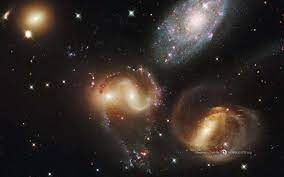
Galaxy morphological classification is a system used by astronomers to divide galaxies into groups based on their visual appearance. There are several schemes in use by which galaxies can be classified according to their morphologies, the most famous being the Hubble sequence, devised by Edwin Hubble and later expanded by Gérard de Vaucouleurs and Allan Sandage. However, galaxy classification and morphology are now largely done using computational methods and physical morphology.
The Hubble sequence is a morphological classification scheme for galaxies invented by Edwin Hubble in 1926. It is often known colloquially as the “Hubble tuning-fork” because of the shape in which it is traditionally represented. Hubble’s scheme divides galaxies into three broad classes based on their visual appearance.
The de Vaucouleurs system for classifying galaxies is a widely used extension to the Hubble sequence, first described by Gérard de Vaucouleurs in 1959. De Vaucouleurs argued that Hubble’s two-dimensional classification of spiral galaxies—based on the tightness of the spiral arms and the presence or absence of a bar—did not adequately describe the full range of observed galaxy morphologies. In particular, he argued that rings and lenses are important structural components of spiral galaxies.
Picture Credit : Google



